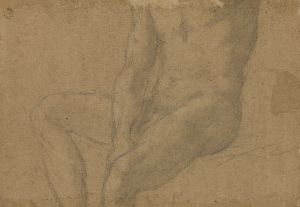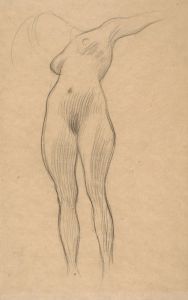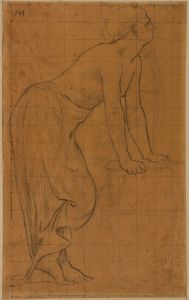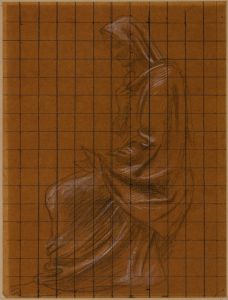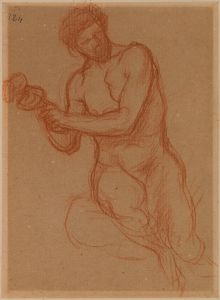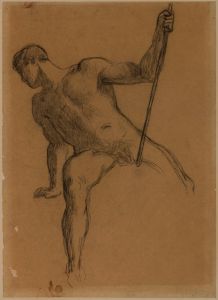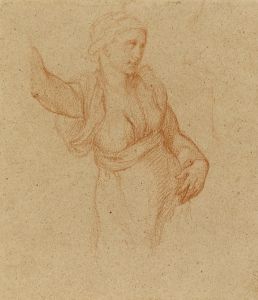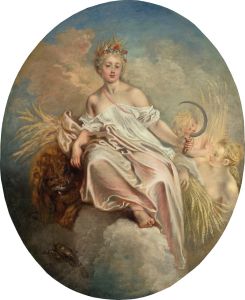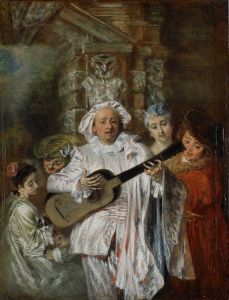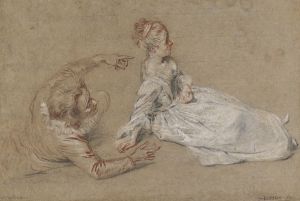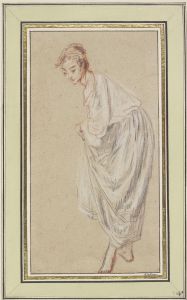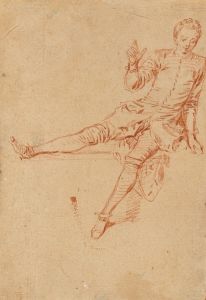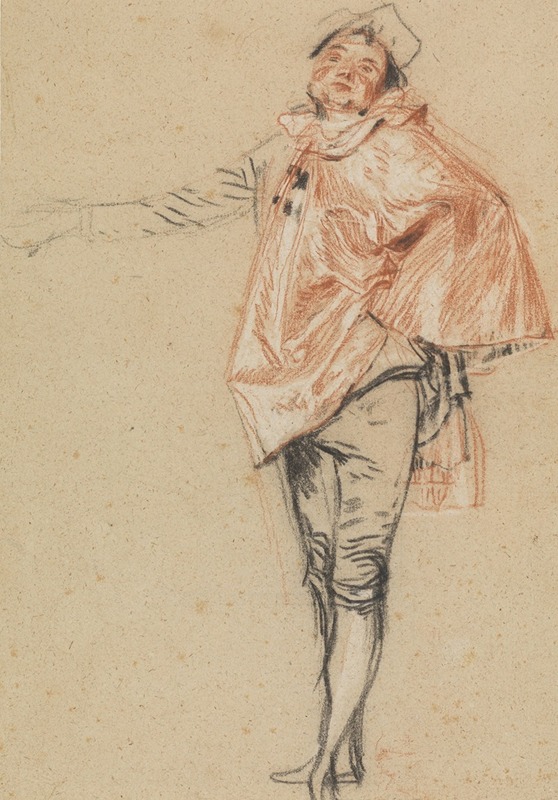
Study of a Standing Dancer with an Outstretched Arm
A hand-painted replica of Jean-Antoine Watteau’s masterpiece Study of a Standing Dancer with an Outstretched Arm, meticulously crafted by professional artists to capture the true essence of the original. Each piece is created with museum-quality canvas and rare mineral pigments, carefully painted by experienced artists with delicate brushstrokes and rich, layered colors to perfectly recreate the texture of the original artwork. Unlike machine-printed reproductions, this hand-painted version brings the painting to life, infused with the artist’s emotions and skill in every stroke. Whether for personal collection or home decoration, it instantly elevates the artistic atmosphere of any space.
Jean-Antoine Watteau's Study of a Standing Dancer with an Outstretched Arm is a drawing that exemplifies the artist's mastery of capturing human movement and expression. Watteau (1684–1721), a prominent French painter and draftsman, is best known for his contributions to the Rococo style and his depictions of fêtes galantes—scenes of elegant outdoor gatherings. While much of his work focuses on painting, his drawings are equally celebrated for their delicacy, precision, and ability to convey the subtleties of human form and gesture.
This particular study is a preparatory drawing, a medium Watteau frequently used to explore poses, gestures, and compositions for his larger works. The drawing depicts a standing dancer with one arm extended outward, a pose that suggests movement and grace. Watteau's use of chalk, often red or black, was typical of his draftsmanship and allowed him to create soft, flowing lines that emphasize the natural contours of the human body. His drawings often served as studies for figures that would later appear in his paintings, though it is not always possible to identify the specific works for which they were intended.
Watteau's drawings are notable for their spontaneity and liveliness, qualities that reflect his keen observation of human behavior and his ability to translate it into art. The Study of a Standing Dancer with an Outstretched Arm demonstrates his interest in theatrical and performative subjects, which were popular in the Rococo period. Dance, music, and theater were recurring themes in his oeuvre, reflecting the cultural milieu of early 18th-century France.
The exact date of this drawing is not documented, but it is consistent with Watteau's style and technique during his mature period. As with many of his studies, this work was likely created using live models, a practice that allowed him to capture the immediacy and authenticity of human movement. Watteau's drawings were highly regarded during his lifetime and continue to be admired for their technical skill and artistic sensitivity.
Today, Study of a Standing Dancer with an Outstretched Arm is appreciated as an example of Watteau's ability to convey elegance and emotion through simple yet refined means. It is part of the broader body of his work that has influenced generations of artists and remains a subject of study for art historians. The current location of this specific drawing is not mentioned in available records, but many of Watteau's works are housed in major collections, including the Louvre in Paris and other institutions dedicated to preserving his legacy.





